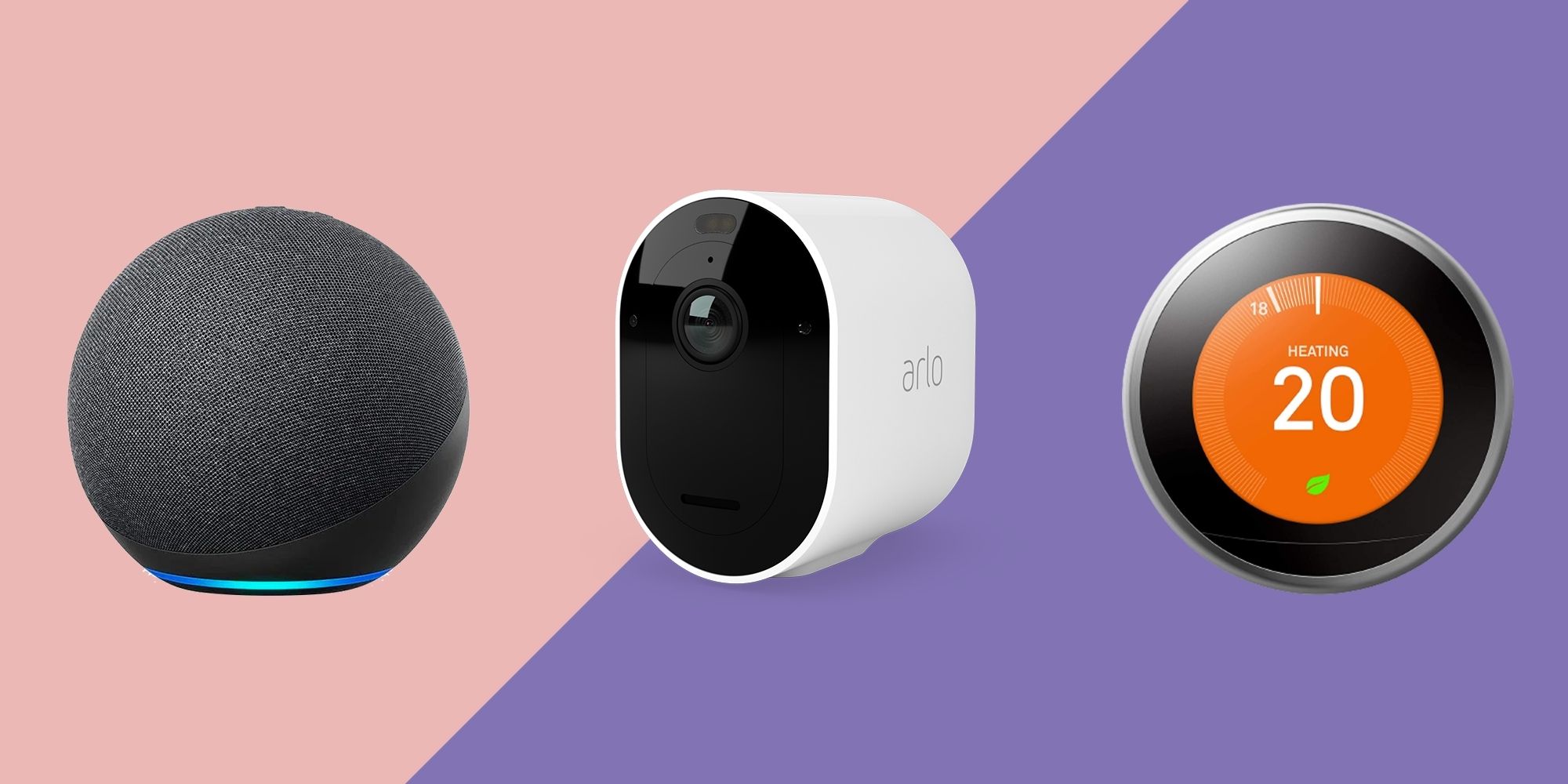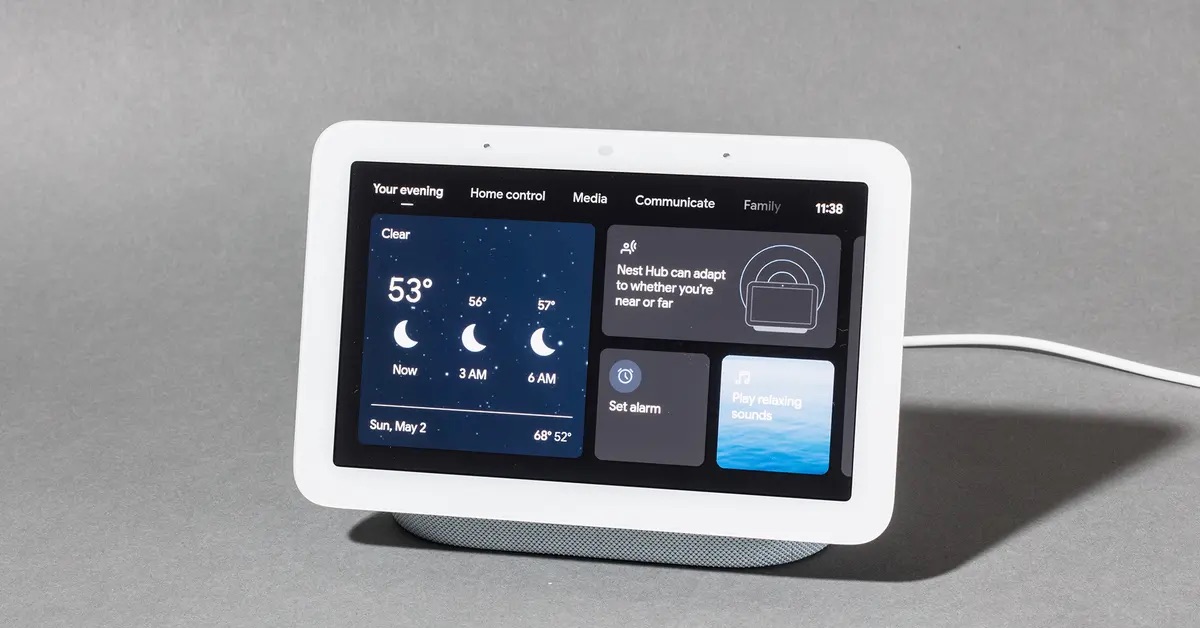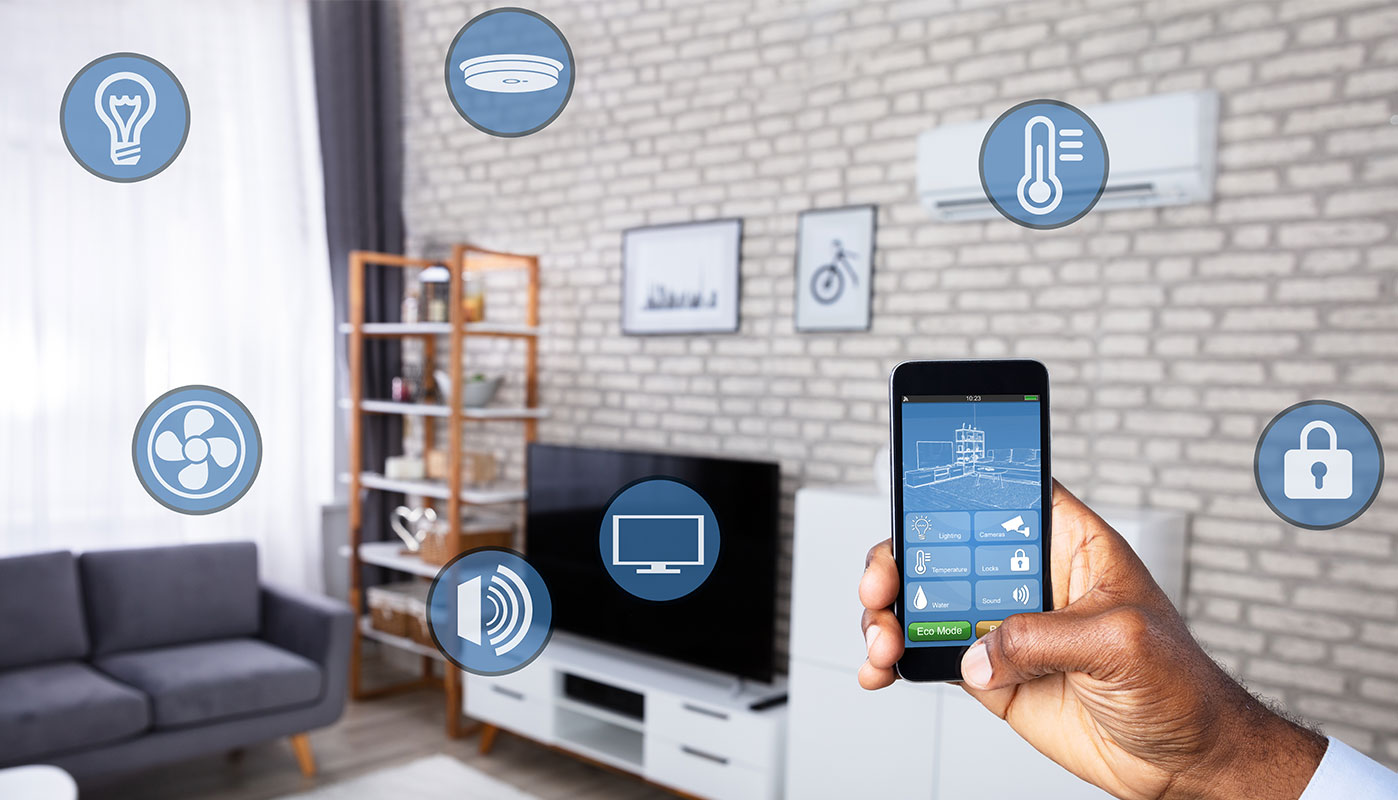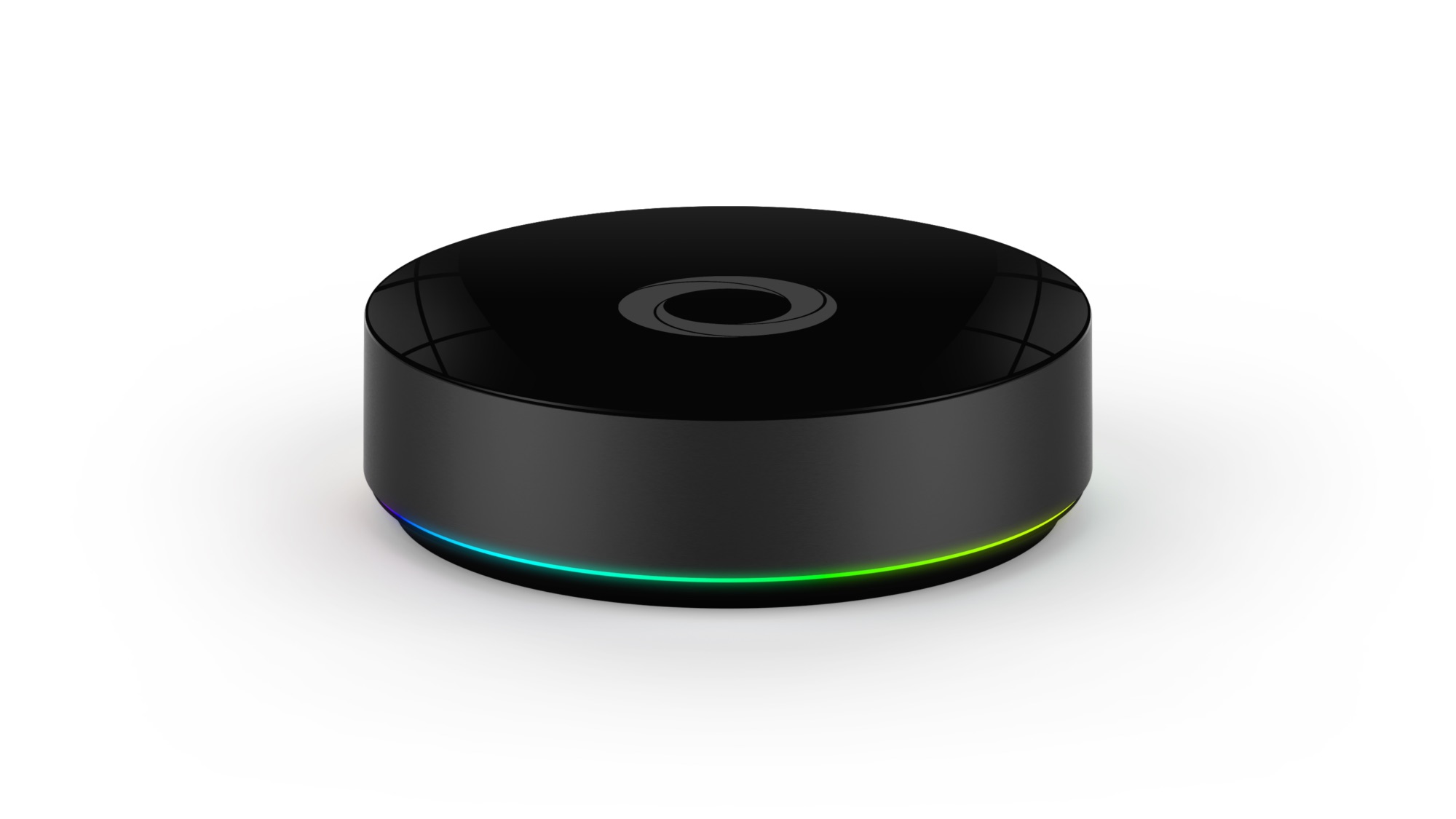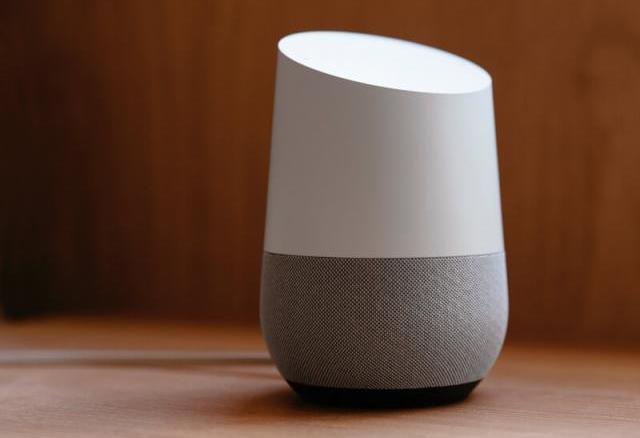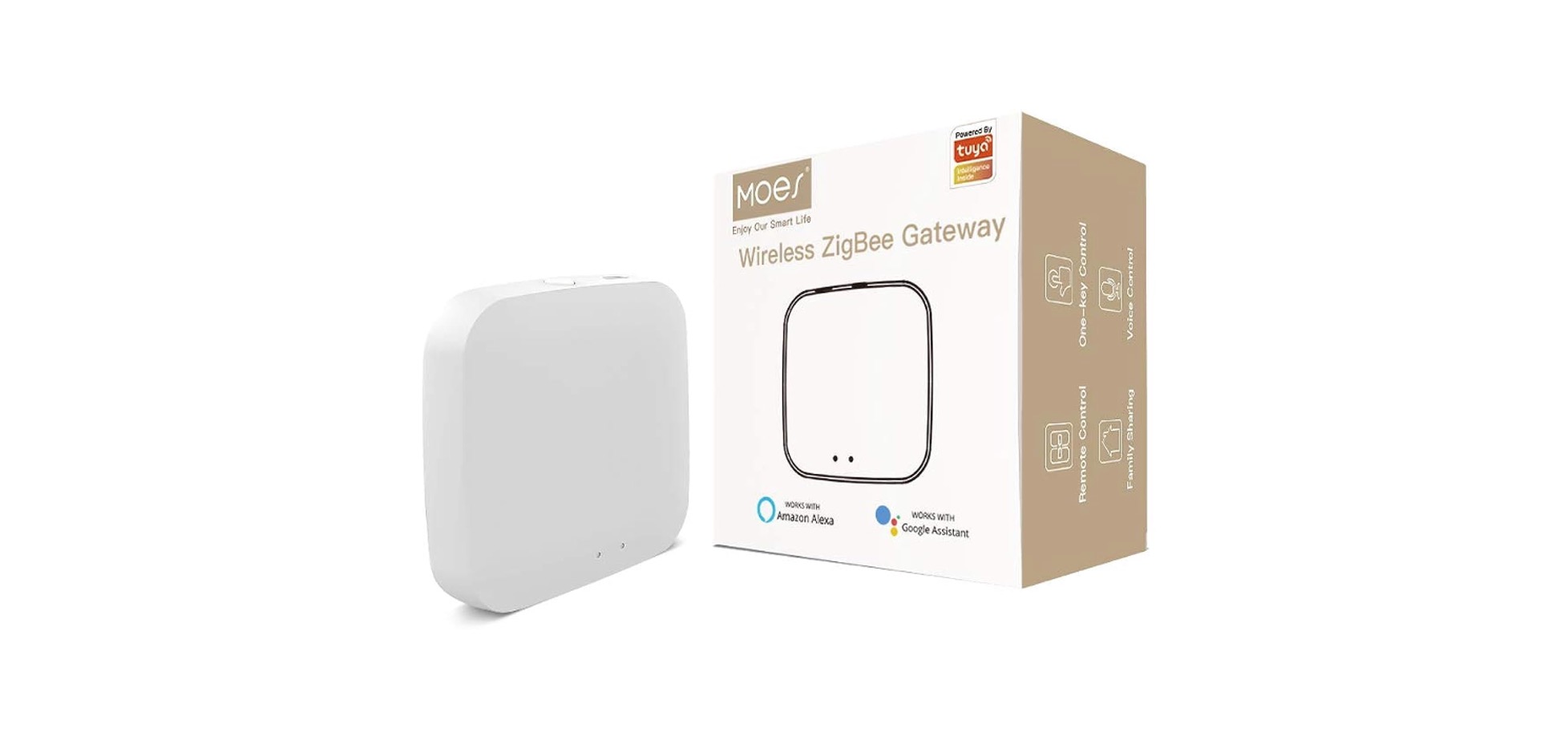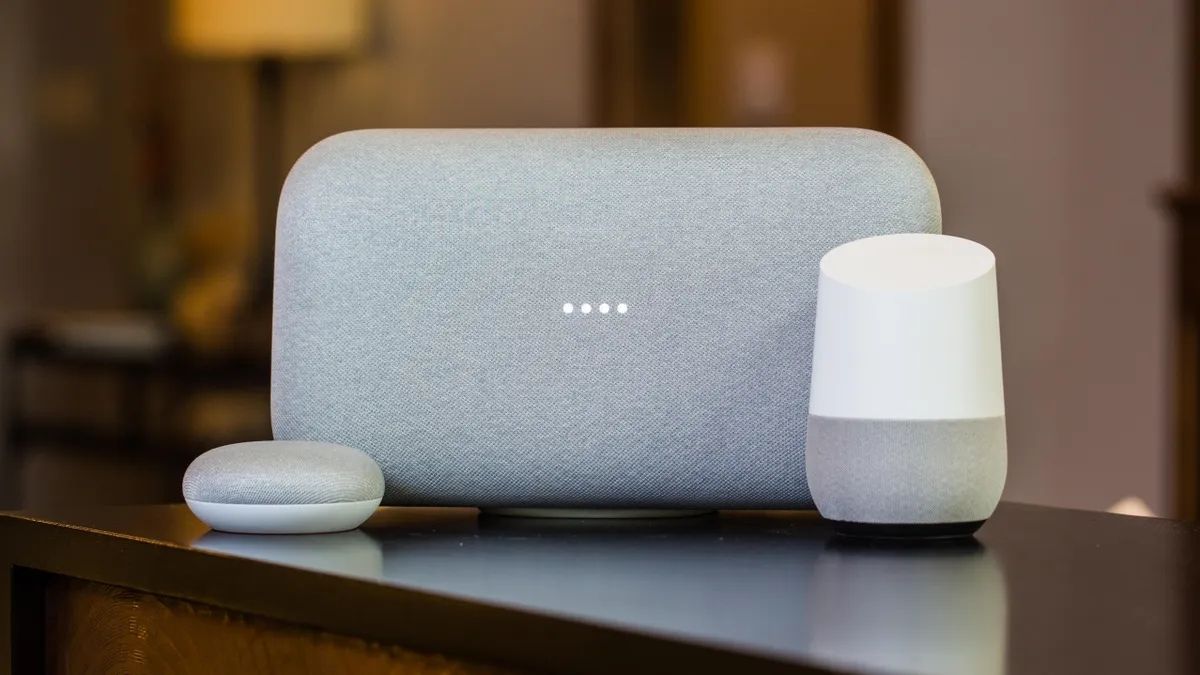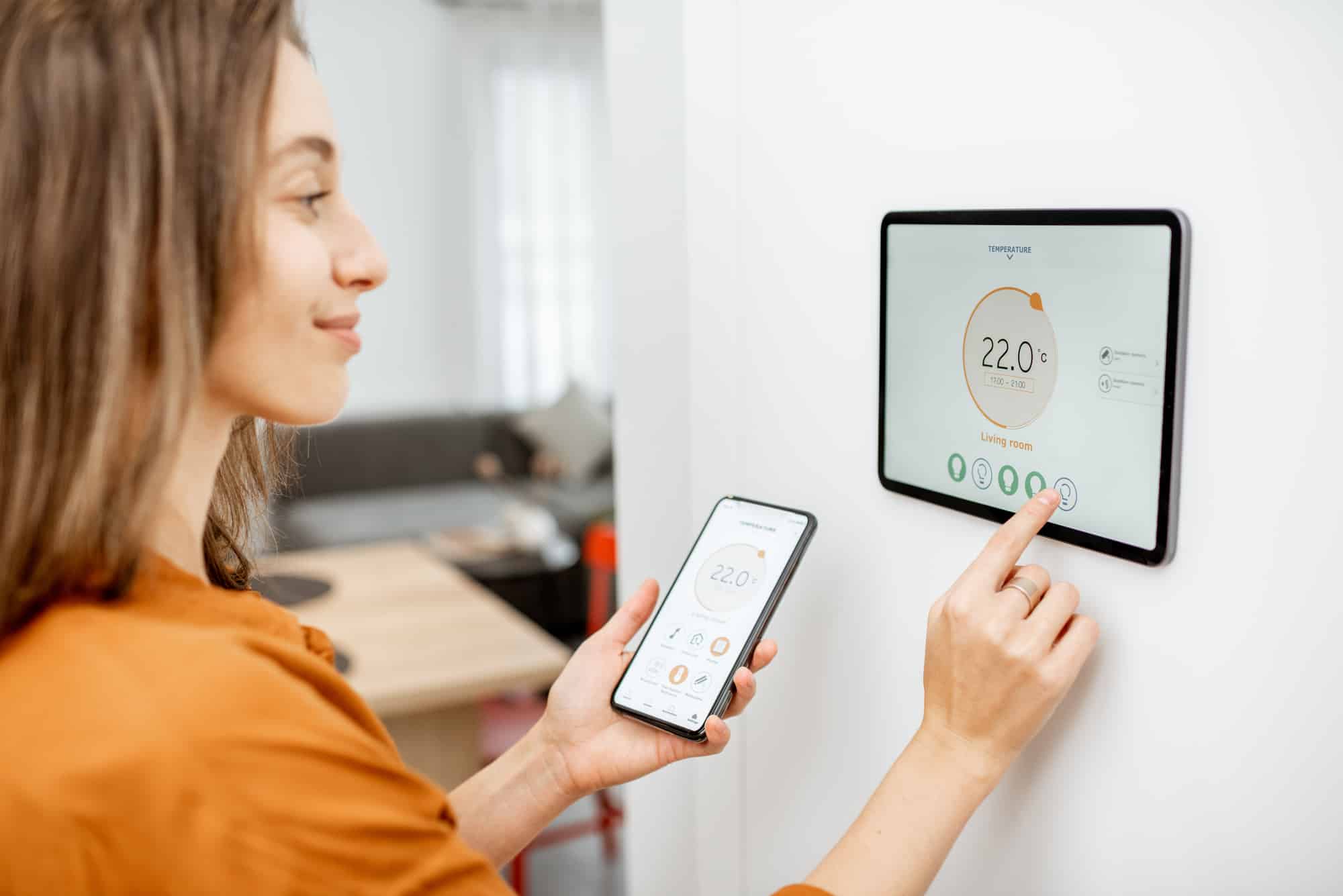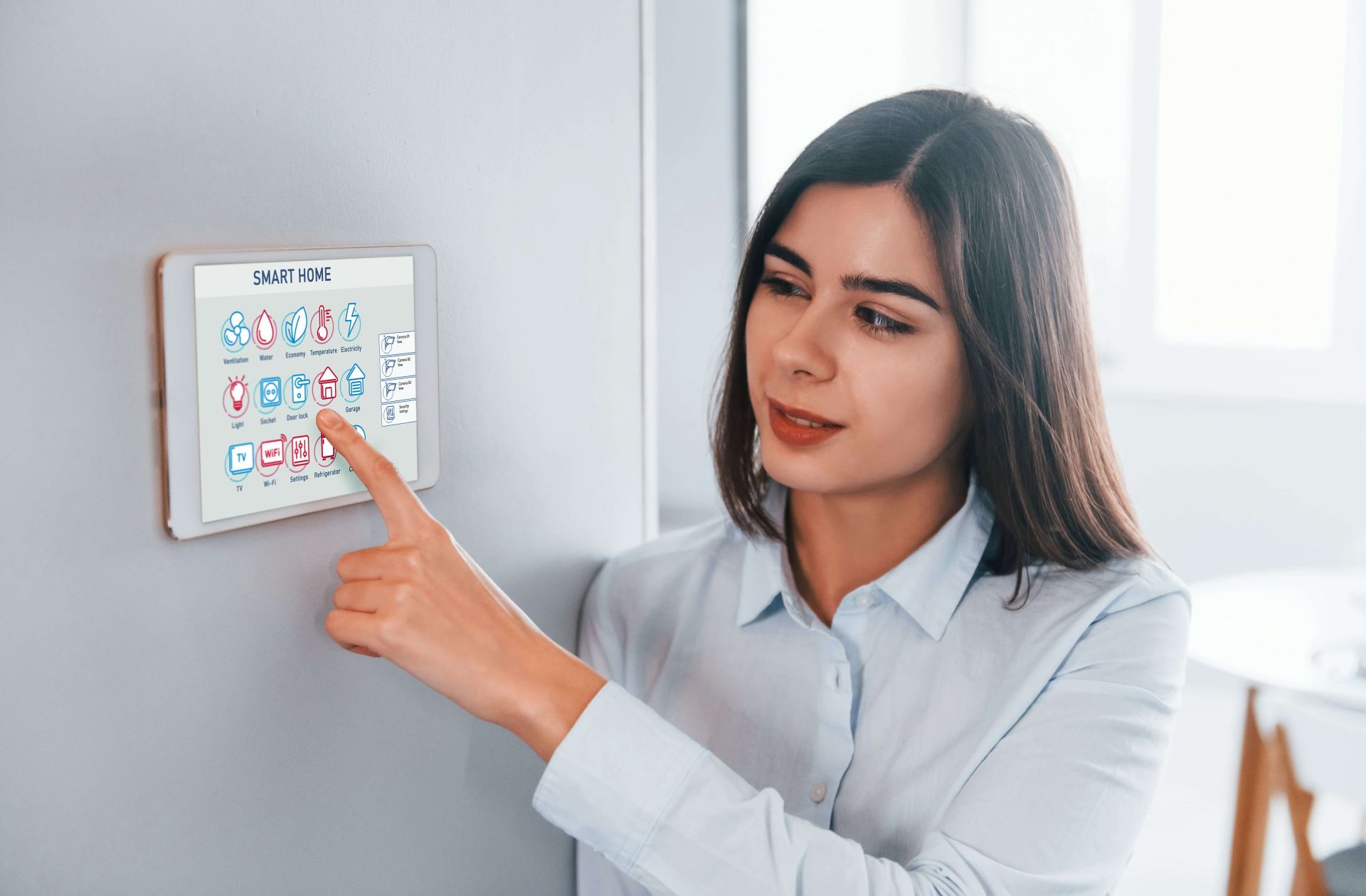What Is a Smart Home Device?
A smart home device refers to any electronic device or appliance that is connected to a home network and can be controlled remotely or automated to perform specific tasks. These devices are designed to make our lives more convenient, efficient, and secure by integrating technology into our everyday living spaces. With the advent of the Internet of Things (IoT), smart home devices have become increasingly popular and accessible to homeowners.
Smart home devices can range from simple gadgets like smart light bulbs and thermostats to more complex systems, such as smart security cameras, door locks, and home automation hubs. These devices are typically equipped with sensors, Wi-Fi or Bluetooth connectivity, and software applications that allow users to control and monitor them through their smartphones, tablets, or voice assistants.
The primary purpose of smart home devices is to provide automation, control, and remote access to various functions and appliances within a home. For example, you can remotely turn on your lights or adjust the thermostat before arriving home, schedule your robotic vacuum cleaner to clean at specific times, or even receive notifications on your smartphone when someone approaches your front door.
Furthermore, smart home devices can be integrated to work together in a cohesive ecosystem. This means that you can create custom routines or scenes where multiple devices collaborate to perform a series of actions. For instance, you can set up a “goodbye” routine that turns off all lights, locks the doors, and adjusts the thermostat when you leave the house.
One key feature of smart home devices is their ability to be voice-controlled. With the rise of virtual assistants like Amazon Alexa, Google Assistant, and Apple Siri, users can simply speak commands to control their smart devices without having to use their hands. This provides a seamless and convenient user experience, especially for those who prefer a hands-free approach or have mobility limitations.
Overall, smart home devices offer a myriad of benefits, including increased convenience, energy efficiency, and improved home security. As more and more devices become interconnected and intelligent, the possibilities for creating a truly smart and connected home are endless.
Understanding the Basics of Smart Home Technology
Smart home technology is built upon the concept of connecting devices and appliances to a network, allowing them to communicate and be controlled remotely. To fully understand how this technology works, it’s essential to grasp the key components and communication protocols that enable smart home devices to function seamlessly together.
At the heart of smart home technology is the home network, typically Wi-Fi, that serves as the foundation for connecting devices. Each smart device is equipped with a network adapter, enabling it to connect to the home network and communicate with other devices and the internet.
In order for devices to communicate effectively, they must adhere to a common communication protocol. The most common protocol used in smart home technology is the Internet Protocol (IP), which is responsible for transferring data packets across the internet. This allows devices to send and receive information, enabling users to control and monitor their smart devices remotely.
Another critical component of smart home technology is the central control hub or smart speaker. This device acts as the central command center, allowing users to control multiple smart devices using a single app or voice commands. These control hubs often support various communication protocols, such as Wi-Fi, Bluetooth, Zigbee, or Z-Wave, making them compatible with a wide range of smart home devices.
Smart home technology also relies on sensors and actuators to gather and respond to data. Sensors can detect changes in the environment, such as motion, light, temperature, or humidity, while actuators can perform physical actions, such as turning on lights, locking doors, or adjusting thermostats. These sensors and actuators work together to automate tasks and create personalized experiences based on user preferences.
Furthermore, cloud-based services play a crucial role in smart home technology. Many smart devices rely on cloud services to store and process data, as well as provide enhanced functionality and intelligence. Cloud connectivity allows users to access and control their smart devices from anywhere in the world using an internet-connected device.
Finally, security is a paramount concern in smart home technology. Manufacturers employ various encryption and authentication methods to protect sensitive data and prevent unauthorized access to smart devices. It is essential for users to implement strong passwords, network security measures, and regularly update the firmware of their smart devices to ensure a secure smart home environment.
Understanding these basic principles of smart home technology is essential in choosing compatible devices, setting up a smart home network, and maximizing the benefits of this exciting technology.
How Smart Home Devices Make Our Lives Easier
Smart home devices have revolutionized the way we live, offering a myriad of ways to streamline daily tasks and enhance our overall quality of life. From increased convenience to improved efficiency, these devices have transformed our homes into smart, interconnected spaces. Here are some of the ways smart home devices make our lives easier:
1. Automation and Remote Control: One of the biggest advantages of smart home devices is their ability to automate tasks and provide remote control capabilities. Whether it’s scheduling lights to turn on and off at specific times, adjusting the thermostat from your smartphone while still in bed, or automating your coffee maker to brew a fresh cup in the morning, smart devices alleviate the need for manual intervention and make everyday routines a breeze.
2. Energy Efficiency: Smart home devices offer significant energy-saving benefits. For example, smart thermostats can learn your heating and cooling preferences and automatically adjust temperature settings based on your occupancy patterns, resulting in reduced energy consumption and lower utility bills. Smart lighting systems can also be programmed to turn off or dim when no one is in the room, further conserving energy.
3. Improved Home Security: Smart home devices play a crucial role in enhancing home security and providing peace of mind. With smart security cameras, doorbell cameras, and motion sensors, you can monitor your home from anywhere, receive real-time alerts, and even remotely engage with visitors or potential intruders. Smart locks provide convenient keyless entry options and the ability to grant temporary access to guests or service providers.
4. Personalized Experiences: Smart home devices allow for personalized experiences tailored to individual preferences. Whether it’s adjusting lighting scenes to create a cozy ambiance, setting up custom routines that automate multiple tasks with a single command, or optimizing your home environment based on your daily routines, smart home devices provide customized comfort and convenience.
5. Seamless Integration: Smart home devices have become increasingly interoperable, allowing for seamless integration between different devices and systems. This means that you can control multiple devices from a single app or use voice commands to operate various smart devices simultaneously. This interoperability creates a cohesive ecosystem that simplifies control and enhances the overall user experience.
6. Accessibility and Independence: Smart home devices offer enhanced accessibility for individuals with disabilities or limited mobility. Voice-controlled assistants, such as Amazon Alexa or Google Assistant, enable users to control devices and perform tasks with simple voice commands. Automated features like smart blinds or robotic vacuum cleaners can lessen the physical strain and provide independence to those who need it.
By leveraging the power of smart home devices, we can simplify our daily routines, save time and energy, enhance our safety and security, and create personalized, comfortable living spaces. With ongoing advancements and innovations in smart home technology, the possibilities for making our lives easier are limitless.
Common Types of Smart Home Devices
The world of smart home devices encompasses a wide range of gadgets and appliances that can be integrated into our homes to make everyday tasks easier and more efficient. Here are some of the most common types of smart home devices that have gained popularity:
1. Smart Speakers: Smart speakers, such as Amazon Echo or Google Nest, serve as the central control hub for your smart home. They not only provide voice command capabilities but also act as a hub to connect and control other smart devices in your home.
2. Smart Thermostats: Smart thermostats, like Nest Thermostat or ecobee, allow you to remotely control the temperature of your home from your smartphone. These devices learn your preferences and adjust settings automatically, leading to energy savings and customized comfort.
3. Smart Lighting: Smart lighting systems, such as Philips Hue or LIFX, enable you to control your lights remotely and customize lighting scenes according to your mood or daily routines. You can dim or change the color of your lights, schedule them to turn on or off, or even sync them with music for entertainment purposes.
4. Smart Home Security: Smart home security devices help enhance your home’s safety and provide peace of mind. These devices include smart security cameras, video doorbells, motion sensors, and smart locks, all of which can be monitored and controlled from your smartphone or smart speaker.
5. Smart Appliances: Smart appliances, such as smart refrigerators, washing machines, or ovens, offer advanced features and connectivity. They can be controlled remotely, monitor energy usage, alert you of any malfunctions, and even suggest recipes based on the ingredients you have in your fridge.
6. Smart Entertainment Systems: Smart entertainment systems integrate your audio and video devices, allowing you to control them seamlessly from a single app or via voice commands. This includes smart TVs, streaming devices like Roku or Apple TV, and sound systems.
7. Smart Home Hubs: Smart home hubs, like Samsung SmartThings or Apple HomePod, provide a centralized platform for connecting and controlling multiple smart devices. These hubs support various communication protocols and allow for easy integration between devices and systems.
8. Smart Plugs: Smart plugs enable you to automate any device by simply plugging it into the smart plug. You can control the device remotely, create schedules, or even set up actions based on triggers, such as turning on the coffee machine when your alarm goes off.
9. Smart Home Security Systems: Smart home security systems, such as those offered by companies like ADT or SimpliSafe, go beyond individual devices and provide comprehensive home security solutions. These systems often include a combination of cameras, sensors, alarms, and monitoring services.
10. Smart Window Treatments: Smart window treatments, such as automated blinds or curtains, can be controlled remotely or set to open and close automatically based on a schedule or specific triggers. They offer convenience, energy efficiency, and privacy control.
These are just a few examples of the many smart home devices available today. As technology continues to advance, we can expect an increasing number of innovative and interconnected devices that will further enhance our homes and simplify our lives.
Benefits of Using Smart Home Devices
Smart home devices offer a multitude of benefits that can greatly improve our everyday lives. Whether it’s increased convenience, energy efficiency, or enhanced security, these devices have the potential to transform our homes into smart, efficient, and connected living spaces. Here are some of the key benefits of using smart home devices:
1. Convenience: Perhaps one of the most significant advantages of smart home devices is the convenience they bring to our daily routines. With the ability to control and automate tasks through voice commands or smartphone apps, we can easily adjust the thermostat, turn off lights, or lock doors without getting up from the couch or even being home. This level of convenience frees up time and simplifies everyday tasks.
2. Energy Efficiency: Smart home devices play a crucial role in promoting energy efficiency and reducing utility costs. For example, smart thermostats can learn your habits and automatically adjust the temperature settings to optimize energy usage while maintaining a comfortable environment. Smart lighting systems can be programmed to turn on and off based on occupancy or natural light levels, eliminating unnecessary energy waste.
3. Home Security: Smart home devices provide enhanced security and peace of mind. With features like smart security cameras, doorbell cameras, and motion sensors, you can monitor your home and receive real-time notifications of any potential threats. Smart locks offer keyless entry options and the ability to grant temporary access to guests, while smart security systems provide comprehensive monitoring and protection.
4. Remote Monitoring: Another benefit of smart home devices is the ability to monitor and control your home remotely. Whether you’re at work, on vacation, or simply away from home, you can use your smartphone or tablet to access and control your smart devices. This allows you to check in on security cameras, adjust temperature settings, or receive alerts in case of any unusual activity or emergencies.
5. Personalization: Smart home devices offer a high level of personalization and customization. You can create personalized routines or scenes that automate multiple tasks with a single command. For example, a “good morning” routine can turn on lights, adjust the thermostat, and play your favorite morning playlist, setting the perfect ambiance for your start to the day. This ability to tailor your smart home devices to your preferences enhances your overall living experience.
6. Peace of Mind: Smart home devices provide a sense of security and peace of mind. Knowing that you can monitor and control your home remotely, receive real-time notifications, and have a higher level of control over your living environment offers peace of mind and reduces worries about home security or energy wastage.
7. Improved Accessibility: Smart home devices also cater to individuals with disabilities or limited mobility, providing them with greater accessibility and independence. Voice-controlled assistants and automated devices can perform tasks or adjustments that would otherwise be challenging or impossible for individuals with mobility limitations.
8. Integration and Interoperability: Smart home devices are designed to work together and integrate seamlessly, creating a connected ecosystem. This integration allows devices to communicate with each other and be controlled from a single app or voice assistant. For example, you can set up a routine that turns off all lights, locks the doors, and adjusts the thermostat when you leave the house, all with a single command.
Overall, smart home devices offer a wide range of benefits that enhance our daily lives. From convenience and energy efficiency to improved security and personalization, these devices have the potential to transform our homes and bring us into the future of smart living.
Factors to Consider When Choosing Smart Home Devices
When it comes to selecting smart home devices, there are several factors to consider to ensure that you choose the right devices that meet your needs and integrate well into your home environment. Taking the following factors into account will help you make informed decisions and create a cohesive smart home setup:
1. Compatibility: Before purchasing any smart home device, it is crucial to ensure compatibility with your existing devices and systems. Some devices may require specific communication protocols or hubs to work together seamlessly. Check for compatibility with your smartphone, smart speaker, or existing smart home ecosystem to avoid any compatibility issues.
2. Communication Protocols: Different smart home devices may use various communication protocols such as Wi-Fi, Bluetooth, Zigbee, or Z-Wave. Check the communication protocol supported by the devices you are considering and ensure they are compatible with your network and other devices in your smart home setup.
3. Ease of Use: Consider the user interface and ease of use of the smart home devices you are considering. Check if the devices offer a user-friendly app or if they can be controlled through a voice assistant. Look for devices that have intuitive interfaces and simple setup processes to ensure a seamless user experience.
4. Security: Security is a crucial factor to consider when selecting smart home devices. Look for devices that offer robust security measures, such as encrypted communication, secure firmware updates, and strong user authentication. It is essential to protect your smart home network and data from potential vulnerabilities.
5. Scalability: Consider the scalability of the smart home devices you choose. As your smart home evolves over time, you may want to add more devices and expand your smart home ecosystem. Ensure that the devices you select can integrate and expand easily, allowing you to add new devices without compatibility issues.
6. Reviews and Ratings: Before purchasing smart home devices, read reviews and check ratings from other users. This will give you insights into the performance, reliability, and user experience of the devices. Look for devices with positive reviews and high ratings to ensure you are investing in quality products.
7. Functionality and Features: Consider the specific functionality and features offered by each smart home device. Determine which features are essential for your needs and prioritize them when making your decision. For example, if home security is a priority, focus on devices with robust security features.
8. Budget: Set a budget for your smart home devices and consider the price range of the devices you are considering. Keep in mind that while some devices may have higher upfront costs, they may offer better functionality, integration, and long-term value.
9. Manufacturer Support: Check the reputation and support offered by the device manufacturer. Look for brands known for providing regular firmware updates, responsive customer support, and a strong track record in the smart home industry.
10. Future Compatibility: Consider the future compatibility and longevity of the devices. Technology evolves rapidly, so ensure the devices you choose have the potential to integrate with future advancements. Look for devices that support firmware updates and have a history of staying up-to-date with new technologies.
By considering these factors when choosing smart home devices, you can create a smart home ecosystem that fits seamlessly into your lifestyle, provides a great user experience, and offers long-term satisfaction.
Setting Up and Integrating Smart Home Devices
Setting up and integrating smart home devices is a crucial step in creating a seamless and interconnected smart home ecosystem. While the setup process may vary depending on the specific devices and manufacturers, here are some general guidelines to help you get started:
1. Plan Your Setup: Before diving into the setup process, plan out how you want to set up and organize your smart home devices. Consider the placement of devices, proximity to Wi-Fi routers, and any potential interference that may affect their performance.
2. Prepare Your Network: Ensure that your home network is stable and strong enough to support multiple smart devices. Consider upgrading your router or adding Wi-Fi extenders to improve signal coverage and reduce any potential connectivity issues.
3. Read the Manuals: Take the time to read the product manuals and follow the manufacturer’s instructions. Each device may have specific setup requirements, and understanding the setup process beforehand will help you avoid any unnecessary complications.
4. Install and Connect Devices: Begin by installing and connecting your smart home devices following the manufacturer’s instructions. This typically involves creating user accounts, downloading relevant apps, and connecting the devices to your home network.
5. Pair Devices: If you have multiple devices that need to work together, such as smart speakers, cameras, and motion sensors, you may need to pair them using the manufacturer’s recommended method. This typically involves following a pairing process within the device’s app or interface.
6. Set Up Automation and Routines: Explore the settings and features of your smart home devices to set up automation and routines. This may involve creating schedules, establishing triggers, or linking devices together to perform specific actions automatically. For example, you can set up a routine to turn off all lights, lock doors, and adjust the thermostat when you say, “Goodnight.”
7. Integrate with Voice Assistants: If your smart home devices are compatible with voice assistants like Amazon Alexa or Google Assistant, take the time to integrate them. This allows you to control your devices using voice commands, providing a hands-free and convenient experience.
8. Test and Troubleshoot: Once your smart home devices are set up, test the functionality and ensure they are working as intended. Troubleshoot any issues you may encounter, such as connectivity problems or device compatibility. Reach out to the manufacturer’s support or online communities if needed.
9. Regularly Update Firmware: Keep your smart home devices up to date by regularly checking for firmware updates. These updates often include bug fixes, security patches, and new features or improvements. Updating your devices will ensure optimal performance and compatibility.
10. Expand and Customize: As you become more familiar with your smart home setup, you may want to expand and customize it further. Consider adding new devices that complement your existing setup and exploring additional features and integrations to enhance your smart home experience.
By following these steps and guidelines, you can effectively set up and integrate your smart home devices, creating a connected and convenient living environment that enhances your daily routines and improves your overall quality of life.
Maintaining and Troubleshooting Smart Home Devices
Maintaining and troubleshooting your smart home devices is crucial for ensuring optimal performance and longevity. Here are some important tips to help you keep your devices running smoothly:
1. Regular Firmware Updates: Stay up to date with the latest firmware updates for your smart home devices. These updates often include bug fixes, security patches, and new features. Check the manufacturer’s website or app regularly for updates, and follow their instructions to install them.
2. Network Stability: A stable network connection is essential for seamless operation of your smart home devices. Periodically check the strength of your Wi-Fi signal and consider using Wi-Fi extenders if needed. Also, ensure that your router firmware is up to date and placed in a central location for optimal coverage.
3. Manage Device Security: Protect your smart home devices from potential security threats by following best practices. Change default passwords, use strong, unique passwords, enable two-factor authentication if available, and regularly review and adjust privacy and security settings in the device’s app or online portal.
4. Clean and Maintain: Regularly clean and maintain your smart home devices to ensure their optimal performance. Follow manufacturer guidelines for cleaning each device, and pay attention to any maintenance requirements, such as replacing batteries or filters.
5. Check Device Compatibility: When adding new smart home devices to your setup, ensure compatibility with existing devices and your smart home ecosystem. Incompatible devices can cause connectivity issues and functionality limitations. Research compatibility requirements and consult the manufacturer’s documentation or support if needed.
6. Troubleshooting Connectivity Problems: In case of connectivity issues, power cycle the device by unplugging it for a few seconds and plugging it back in. Restart your router and ensure that the device is within range of the Wi-Fi signal. If the problem persists, consider resetting the device and reconnecting it to your network.
7. Consult Manufacturer Support: If you encounter persistent issues with your smart home devices, reach out to the manufacturer’s customer support. They can guide you through troubleshooting steps specific to your device and provide further assistance or warranty support if necessary.
8. Backup Device Settings: Some smart home devices allow you to back up their settings and configurations. Take advantage of this feature to ensure that you have a backup of your device settings in case of a malfunction or the need to reset the device.
9. Keep Documentation and Manuals: Store the documentation and manuals for your smart home devices in an easily accessible place. These resources often contain troubleshooting guides, warranty information, and important instructions that can help you resolve issues.
10. Stay Informed and Educated: Stay up to date with the latest trends and developments in smart home technology. Follow relevant online communities, subscribe to tech blogs, and attend webinars or workshops to stay informed about new features, updates, and troubleshooting techniques.
By following these maintenance and troubleshooting tips, you can ensure that your smart home devices continue to function optimally and provide you with the convenience, security, and efficiency they are designed to deliver.
Enhancing Home Security with Smart Home Devices
Smart home devices have revolutionized home security by providing homeowners with innovative tools and features to protect their properties. Here are some ways in which smart home devices can enhance home security:
1. Smart Security Cameras: Smart security cameras offer surveillance capabilities to monitor your home both indoors and outdoors. These cameras provide real-time monitoring, motion detection, and recording features accessible from your smartphone or computer. Some cameras offer advanced AI-powered features to distinguish between humans and pets or send alerts for suspicious activity.
2. Video Doorbell Cameras: Video doorbell cameras allow you to see who is at your front door and communicate with them even when you’re not home. They provide live video streaming, two-way audio, and motion detection alerts. You can speak to delivery personnel or check for package thefts right from your smartphone.
3. Smart Motion Sensors: Smart motion sensors can detect movement and send instant notifications to your smartphone. These sensors can be placed strategically around your home, triggering alarms or activating other smart devices, such as lights or cameras, to deter potential intruders.
4. Smart Locks: Smart locks provide convenient keyless entry options to your home. You can lock or unlock your door remotely using your smartphone or a voice command, eliminating the need for physical keys. Some smart locks also offer virtual keys that can be shared with family members or service providers for temporary access.
5. Security Alarm Systems: Smart home security systems integrate various security devices, such as cameras, sensors, and door/window contacts, into a comprehensive setup. These systems can be armed or disarmed remotely, provide professional monitoring options, and send alerts to your smartphone or a monitoring service in case of security breaches.
6. Presence Simulation: Smart home devices allow for presence simulation, which makes it seem like someone is at home even when you’re away. You can schedule lights and appliances to turn on and off at specific times or randomly to deter potential burglars, giving the illusion of an occupied home.
7. Remote Monitoring and Control: Smart home security devices enable remote monitoring and control, giving you the capability to check on your home at any time, from anywhere. You can view live video feeds, receive security alerts, and control your security system or smart locks remotely using your smartphone, providing you with peace of mind when you’re away.
8. Integration with Other Devices: Smart home security devices can integrate with other devices and systems to enhance security further. For example, they can trigger lights to turn on when motion is detected or activate a pre-set routine when a security breach is detected, such as sounding an alarm and automatically unlocking doors for easy exit.
9. Increased Deterrence: Visible smart home security devices act as a deterrent to potential intruders. The presence of security cameras, motion sensors, and alarm systems can serve as a warning, making your home less attractive to burglars and increasing the overall security of your property.
10. Monitoring and Notifications: Smart home security devices provide real-time monitoring and instant notifications in case of security events. Whether it’s a motion detected by a camera or a door opening, you can receive immediate alerts on your smartphone, allowing you to take appropriate action or contact authorities if necessary.
By leveraging the capabilities of smart home security devices, homeowners can significantly enhance their security measures, deter potential intruders, and gain peace of mind knowing that their homes are equipped with advanced and connected security solutions.
Exploring the Future of Smart Home Technology
The future of smart home technology is poised to bring even more innovation and convenience to our daily lives. As technology continues to advance, we can expect exciting developments that will transform our homes into intelligent, interconnected spaces. Here are some trends and possibilities to look forward to in the future of smart home technology:
1. Artificial Intelligence (AI) Integration: Artificial intelligence will play a significant role in smart home technology, enabling devices to learn from our behaviors and adapt to our needs. AI-powered assistants will become even more intuitive, offering personalized suggestions and automating tasks without the need for explicit commands.
2. Voice and Gesture Recognition: Voice and gesture recognition technology will become more advanced and widespread, enabling more seamless and natural interactions with smart home devices. Instead of using a phone or voice assistant, we may be able to control devices simply by speaking or gesturing in the direction of the device.
3. Smarter Energy Management: Energy management systems will become more sophisticated, allowing homeowners to optimize their energy consumption and reduce their carbon footprint. Smart home devices will intelligently monitor and adjust energy usage based on occupancy patterns, weather conditions, and time of day.
4. Seamless Interconnectivity: Smart home devices will integrate more seamlessly, creating a unified and cohesive smart home experience. Devices from different manufacturers and ecosystems will be able to communicate and work together effortlessly, simplifying control and opening up endless possibilities for automation and customization.
5. Enhanced Home Security: Home security will continue to evolve with advanced technologies such as facial recognition, behavioral analysis, and predictive analytics. Smart home security systems will become even more proactive, providing real-time threat detection and sophisticated intrusion prevention capabilities.
6. Augmented Reality (AR) and Virtual Reality (VR) Integration: AR and VR technologies will find their way into our smart homes, offering enhanced experiences and immersive interactions. Imagine using AR goggles to visualize how furniture may look in your living room before making a purchase or using VR to virtually tour your smart home setup.
7. Health Monitoring and Well-being: Smart home devices will increasingly focus on monitoring our health and well-being. From sleep tracking sensors and smart mattresses to smart appliances that provide nutritional guidance, our homes will become proactive partners in promoting our overall physical and mental health.
8. Smart Cities Integration: As cities become smarter and more connected, our homes will play an integral role in this ecosystem. Smart home devices will seamlessly interact with other urban technologies, allowing us to manage home functions in coordination with city services, such as energy grids or transportation systems.
9. Robotics and Automation: Robots will become more prevalent in our homes, performing various tasks and providing assistance. We can expect to see advanced cleaning robots, personal assistant robots, and even robotic companions that engage in human-like interactions.
10. Sustainability and Green Living: There will be an increasing emphasis on sustainable and eco-friendly smart home solutions. Devices and systems will be designed with energy efficiency, waste reduction, and sustainable materials in mind, helping us create greener and more eco-conscious homes.
These possibilities represent just a glimpse of the future of smart home technology. As innovation continues, smart homes will become even more integrated, personalized, and transformative, bringing us closer to a future where our living spaces effortlessly adapt to and enhance our lifestyles.







